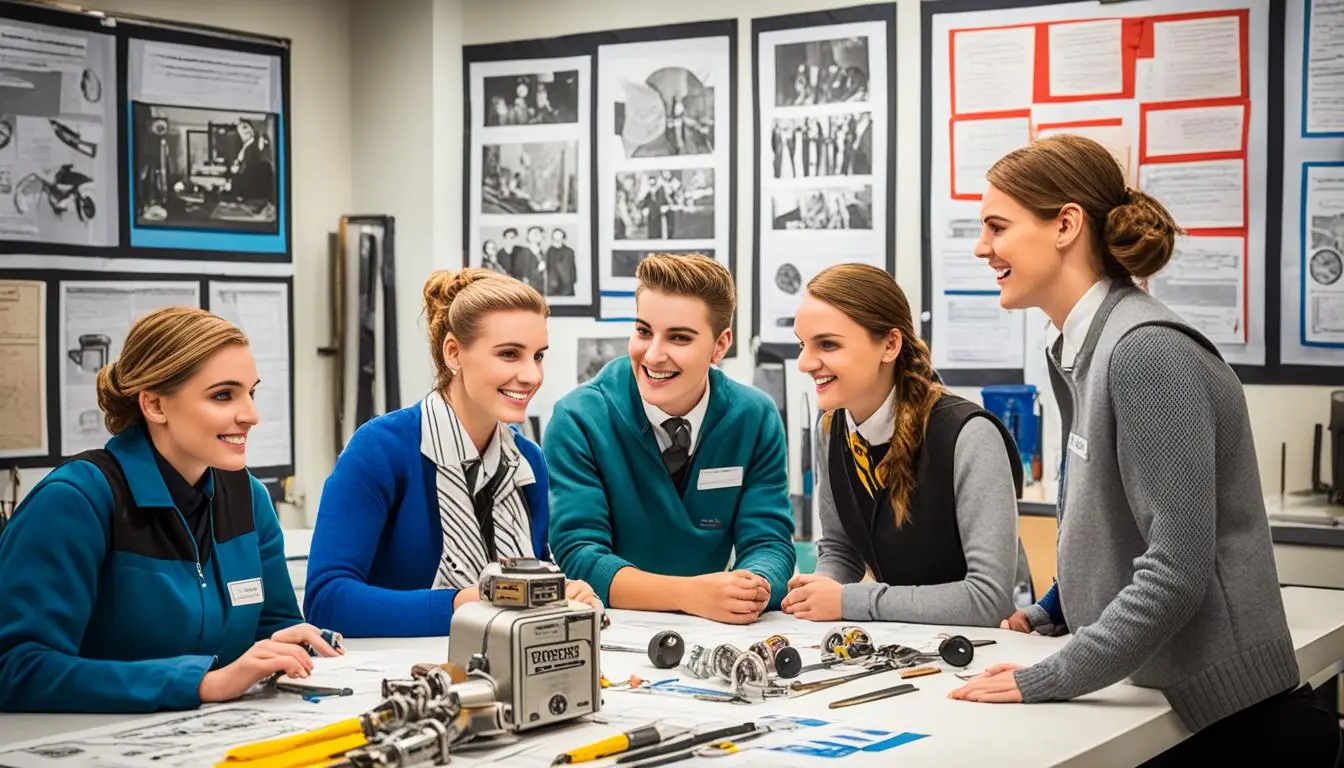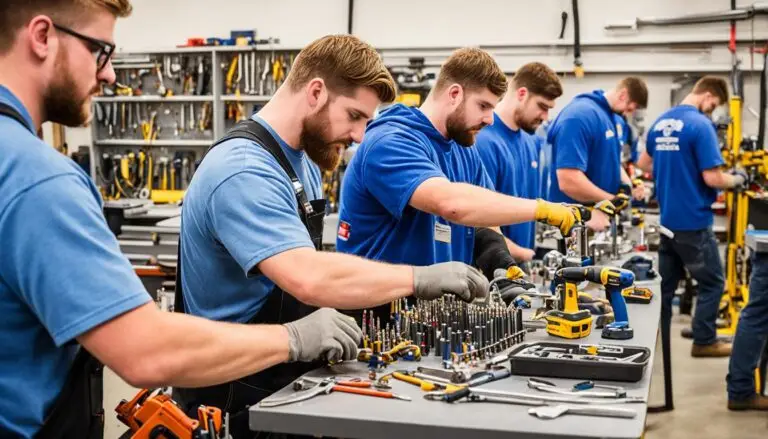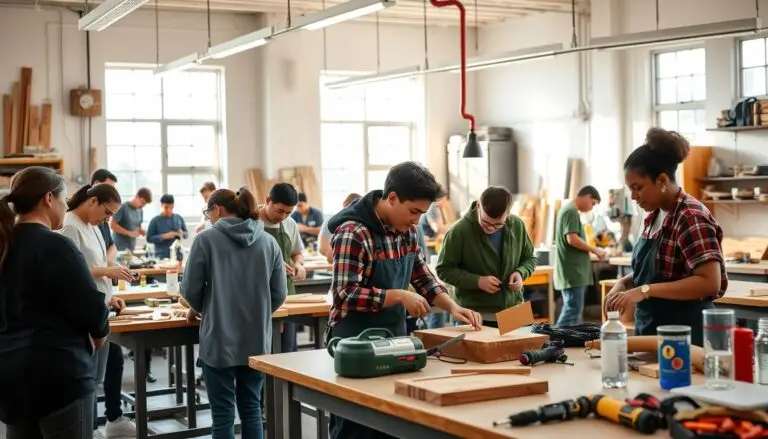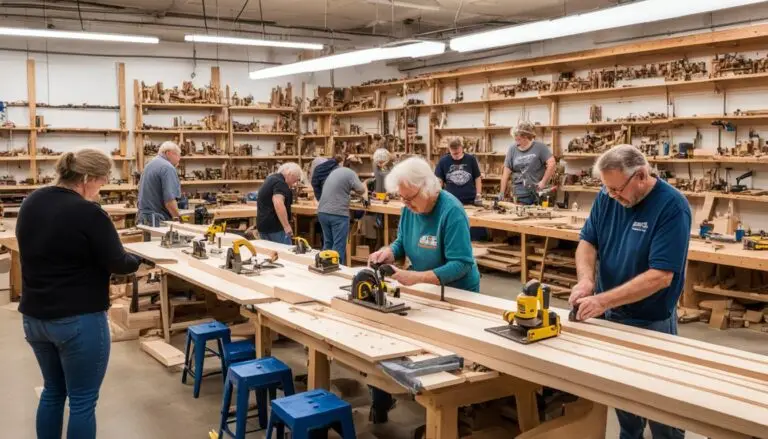Evolution of Vocational Education: A Journey Through Time
Evolution of Vocational Education: A Journey Through Time
The story of vocational education is truly fascinating. It goes back to ancient times and their apprenticeship systems. Over the centuries, as the workforce and industry changed, vocational education kept evolving. It has always played a key role in helping people develop skills and get ready for the workforce.
From the first trade schools to today’s vocational and technical schools, this journey has been long. It was shaped by big changes like industrial revolutions and new technologies. This article will look at the history of vocational education. We’ll see where it came from, its important moments, and how it has changed to keep up with today’s job market.
Key Takeaways
- Vocational education has a rich history dating back to ancient apprenticeship systems
- The development of trade schools and guilds paved the way for formal vocational training
- Vocational education has adapted to meet the changing needs of industrial revolutions
- Modern vocational and technical institutions play a crucial role in workforce development
- Understanding the evolution of vocational education provides insights into its continued relevance
Tracing the Origins of Vocational Education
The history of vocational education goes way back to ancient times. Apprenticeships and trade schools were key in sharing skills and knowledge. These early methods helped shape today’s vocational education.
Apprenticeship Roots in Ancient Civilizations
In ancient Greece, Rome, and China, skilled workers like blacksmiths and weavers took apprentices. These programs let young people learn by doing, under the watchful eyes of experts. This kept traditional trades alive and skills sharp.
Early Trade Schools and Guilds
As societies grew more complex, trade schools and guilds became more important. These places offered structured training in specific trades. Guilds also made sure everyone in a trade met certain standards, keeping quality high and secrets safe.
Vocational education started because ancient societies needed skilled workers. These early systems helped create the formal vocational programs we have now. They show how people have always sought specialized knowledge and skills.
Vocational education has always been evolving, adapting to society’s and economy’s needs. From ancient apprenticeships to modern trade schools, it’s shaped today’s wide range of programs and chances.
History of Vocational Education
The history of vocational education in the United States is quite interesting. It shows how it has changed to fit the needs of industries and the economy. It started with apprenticeships and grew into trade schools and technical colleges. This type of education has been key in shaping the workforce.
It began in the colonial era with apprenticeships. Young people learned skills from experienced craftsmen. When the industrial revolution came, there was a need for a more organized way of learning these skills. This led to the creation of trade schools in the late 1800s.
A big moment was the Smith-Hughes Act of 1917. It gave federal funding for vocational programs in high schools. This helped more Americans get the skills they needed for good jobs.
Over time, vocational education has kept changing to meet new job market needs. The mid-1900s saw the rise of community colleges and technical institutes. These places offered specialized training in many fields.
Now, vocational education is still a big part of learning. It helps students get hands-on skills and the knowledge they need for today’s jobs. As the economy and jobs change, vocational education will keep growing and changing too. This ensures the US has a skilled and adaptable workforce.
“Vocational education is not just about learning a trade; it’s about empowering individuals to contribute meaningfully to the economy and society.”
The story of vocational education in the US shows its value in teaching practical skills. It started with apprenticeships and has grown into a key part of education. It helps students get ready for careers and helps the economy too.
Vocational Education’s Transformation
Vocational education has changed a lot, thanks to the needs of today’s job market and new industrial changes. Now, the job world is more complex and requires specific skills. Vocational schools have updated their courses and teaching ways to make sure students are ready for their careers.
Adapting to Industrial Revolutions
The first industrial revolution brought steam power and machines, changing vocational education. Schools for trades and technical skills started up, offering hands-on learning in areas like making things, mining, and engineering. These schools were key in creating the skilled workers needed for the 19th century’s industrial growth.
Later industrial changes, with new tech like electricity, automation, and digital tools, kept shaping vocational education. Now, vocational programs cover many areas, from old trades to new ones like IT, renewable energy, and healthcare. Courses and teaching methods have changed too, using the latest tech and skills needed in the job world.
FAQ
What is the history and evolution of vocational education?
Vocational education has a long and interesting history. It started with ancient apprenticeships and trade schools. Over time, it changed to fit the needs of industries and the economy, growing with major industrial changes.
How have apprenticeship systems and early trade schools shaped the development of vocational education?
Apprenticeships in ancient times let skilled workers teach their skills to the next generation. Early trade schools and guilds helped make trades more professional. They played a big part in vocational training’s growth.
What are the key milestones and pivotal moments in the history of vocational education?
Major events and changes have shaped vocational education’s history. Political, social, and economic factors have influenced its growth. It keeps changing to meet the needs of industries and workers, preparing students for their careers.
How has vocational education transformed in response to industrial revolutions?
Vocational education has changed a lot to keep up with the job market and industrial changes. It has updated its curriculum and teaching methods. This ensures students get the skills and knowledge needed in their fields.
What is the importance of understanding the history and evolution of vocational education?
Knowing about vocational education’s history helps us see its key role in building the workforce and skills. It shows how it has changed to meet industry and economic needs. This knowledge highlights its importance in preparing people for their careers.




